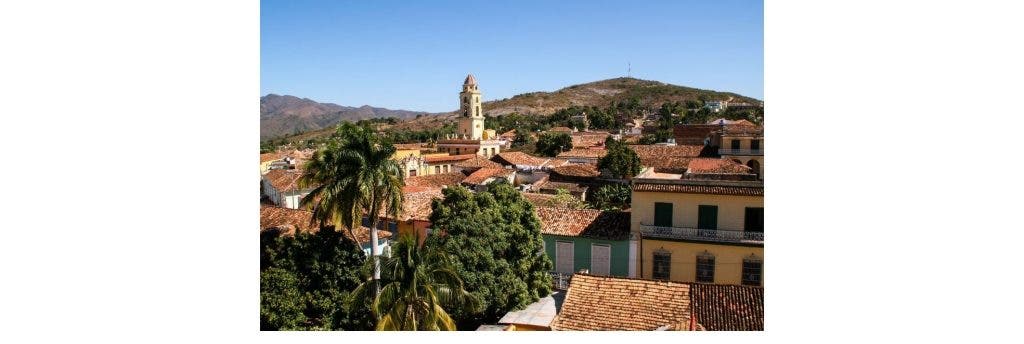
Besides sunshine and sugar cane, what has Cuba got? It looks like the USA is serious about letting Americans party along Havana’s beaches and carry home a cigar or two. For two generations, two of the continent’s closest neighbours have been estranged with nary a neighbourly howdy between them. There was warranted American disdain when Castro turned to Russia for help and converted his island into a Communist dictatorship instead of a socialist democracy. But others have said that sometimes an obstreperous foe’s behaviour changes more quickly by talking rather than isolating.
Cuba may have something that Americans would like to buy. Most of it is under the sea, off Cuba’s northwest coast. It’s oil, of course. But the politics of oil plays just a small role in the new American-Cuban détente. Americans in the oil business may be hoping that Cuba’s oil – lying close to Florida’s beaches – will become prospective targets, but Cuban drillers have had expensive spectacular fails. Oil doesn’t flow easily in the Caribbean.
Three geologists whom I know – Canadians working for three different companies – have spent time exploring Cuba’s subterranean oily treasures. They didn’t find much oil, though one found a wife and settled into village life south of Havana. Nevertheless, there is oil within Cuba’s domain – the US Geological Survey estimates billions of (mostly offshore) barrels are awaiting discovery. Unfortunately, after drilling deeply in 2012 just off the north Cuban coast, hopes for the discovery of big oil fields were dashed. At least for now.

Things that make an oil field include source rock (usually oily shale), porosity (fractures, holes, and cracks that hold hydrocarbons), and traps (which can be ancient buried reefs, sand bars, pinched thrust sheets, or a bunch of other structures). There’s much more to an oil field than this, of course, but without a source, porosity, and trap, you’d better keep your derrick in the shed at home. The things that make an oil field economical are the cost of production (depth of well, rock type, existing infrastructure), nearness to market, and the rule of law within the jurisdiction. How does Cuba stack up among these?
Well, the elements that could create a profitable oil field barely exist in Cuba. The country itself has amazingly varied geology with plenty of source rock and plenty of traps buried in its highly structured geology, although the porosity element is sometimes problematic. Oil seeps were discovered centuries ago – strangely, though, the oil drips from igneous rocks, not the typical sedimentary limestones and sandstones that usually host hydrocarbons. An American Association of Petroleum Geologists’ 1932 paper, Occurrence of Oil in Igneous Rocks of Cuba, estimated that over 200 million barrels of “asphalt grade” oil was locked in rock along the north-central Cuban coast. In places, the heavy oil seeps from intrusive diorite dikes which have cut through 1,500 feet (500 metres) of Jurassic limestone and shale. All of this bode poorly for the explorers of the 1930s and it still does today. It means the hydrocarbon setting is complicated and unpredictable – and much of the oil itself is not much better than low-grade tar.
Regardless the US Geological Survey’s prediction of massive potential, Cuba has been energy-starved for a century. To fix this, Cuba famously dealt with Venezuela, shipping well-regarded Havana-trained doctors south in exchange for well-regarded South American oil. This worked when Hugo Chavez was alive, but the flow slowing. Cuba needs to pump its own oil. Consumption has been around 155,000 barrels per day; production is one-third that. In the past, the shortfall was purchased, bartered, or gifted from Russia and Venezuela. Both Russia and Venezuela are former big-bucks oil-oligarchies and were generous benefactors when oil prices were high. But things have changed. Those former sugar daddies have turned into sugar duds.
With the help of seasoned foreign geologists, Cuba has tried to produce its own oil. A very capable Canadian company – mining giant Sherritt International – explores and develops much of the country’s onshore oil. Sherritt is the largest independent onshore oil producer in Cuba. But there is not an enormous amount of onshore oil. The real prize is waiting off the north coast – that’s where the USGS estimates 4.6 billion barrels of oil will eventually be produced. (The Cuban government claims the number is 20 billion barrels – but they are looking for investment partners.) Deep sea oil is not seeping to the surface – it is locked in rock deep below the ocean floor. Even though Cuba is near huge deep-water oil fields in the Gulf of Mexico, the geology under Cuba’s waters is remarkably different. The sticky prize is under 300 metres of seawater, then beneath 8,000 metres (25,000 feet) of twisted, faulted, thrusted rock. Geologists have a technical name for the jumbled thrust sheets that hold Cuba’s submarine oil – they call such formations a dog’s breakfast. It’s not pretty.

Not far from Cuba’s bit of the Caribbean are Gulf of Mexico oil platforms – some of which each produce 200,000 barrels a day. That’s more than the entire country uses. Large reserves are also under Cuba’s water, but so far none of it has been pumped to the surface. A recent casualty in the deep drilling effort was the Spanish oil company Repsol. After years of seismic exploration and testing under the tropical waters, Repsol gave up in 2012. Others have poked holes in Cuban exploration blocks – Brazil’s Petrobras (an expert at deep marine exploration), Russian companies Rosneft and Zarubezhneft, as well as Norwegian, Indian, and Malaysian companies. All have given up on their offshore projects. Venezuela’s national oil company continues to be supportive, but can’t afford to drill the deep tricky wells off Cuba’s coast. Because of the 50-year embargo, American firms have not been involved at all – even though the huge Florida market for Cuba’s oil is only a hundred kilometres to the north.
But there is a new player. Like Cuba, it was an old enemy of the USA but is now being treated like a new friend. A few days ago, the presidents of Vietnam and Cuba signed a memorandum of understanding with 6 points of economic cooperation. The memorandum includes a provision allowing PetroVietnam to invest in Cuban oil exploration. Vietnam has significant deep sea production, but does not have the spare billions needed to eat into Cuba’s dog breakfast geology. Chances are great that Petrovietnam will suffer the same fate as all of its predecessors..

Greatly complicating things for Cuba, the drop in oil prices has killed most deep sea exploration projects everywhere in the world. Low prices force drillers away from risky targets because the odds of a big financial return are too small. It must be frustrating for the Cuban people to own a non-recoverable resource that even the Americans assess at $250 billion. Because of the stubbornly unyielding deep sea reserves, Cuban leaders have refocused their efforts on the original fields – the small but proven onshore resources that already supply a chunk of the country’s oil. The Cubans have also begun looking at solar, wind, and biomass energy (from sugar mill waste). Cuba’s vice president, Marino Murillo, recently told his parliament that Cuba plans to invest $3.6 billion over the next 15 years to develop alternative energy.
This might be good news for Cuba’s growing tourist industry – oil production lies near Havana and Varadero. Oil derricks are found on beaches popular with Canadian and European winter holidayers. The threat of leaks and spills worries Cuban residents as well as foreign resort developers. Cuba’s possible switch away from environmentally risky deep sea oil exploration towards other energy schemes reduces everyone’s anxiety.
The bottom line to this story is that Cuba and the States may become friendly neighbours but oil is not the main reason. Someday the potential offshore Cuban oil reserves may be drilled (perhaps by Vietnamese drillers), but with the current low price of oil and with the difficult geology of Cuba’s thrust and fold belt, full development is years into the future. By then the other elements that make an oil field – including lower cost of production and rule of law – will hopefully be ingrained features of the Cuban business environment.






